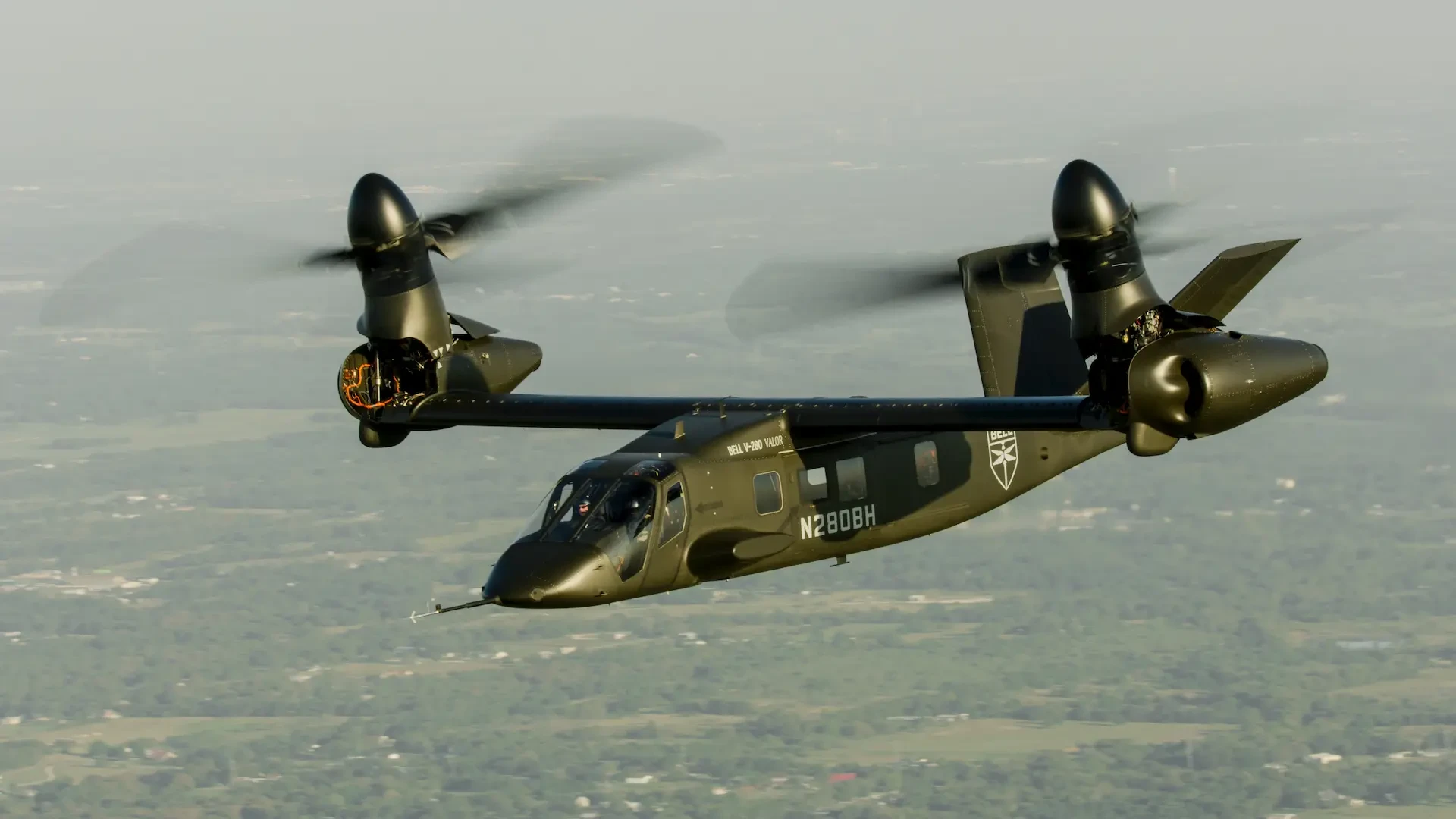In contrast to other projects in the US Army's once burgeoning Future Vertical Lift (FVL) portfolio, the Future Long Range Assault Aircraft (FLRAA) program, to be embodied in a productionised version of Bell's V-280 Valor Tiltrotor demonstrator, continues to gather pace and make significant progress, having recently passed 'Milestone B'.
With the high profile (and, arguably, somewhat myopic) cancellation of its sister project, the Future Attack and Reconnaissance Aircraft (FARA), and delays to the delivery and introduction of the Improved Turbine Engine Program (ITEP) that was intended to power it - now the T901 will merely act as a replacement engine for the UH-60 Black Hawk and AH-64 Apache - the FVL program landscape looks a little bleak. That makes the Bell V-280 FVL's 'last man standing' in terms of platform. In modernisation and reputational terms for the US Army, FLRAA as a project simply must succeed.
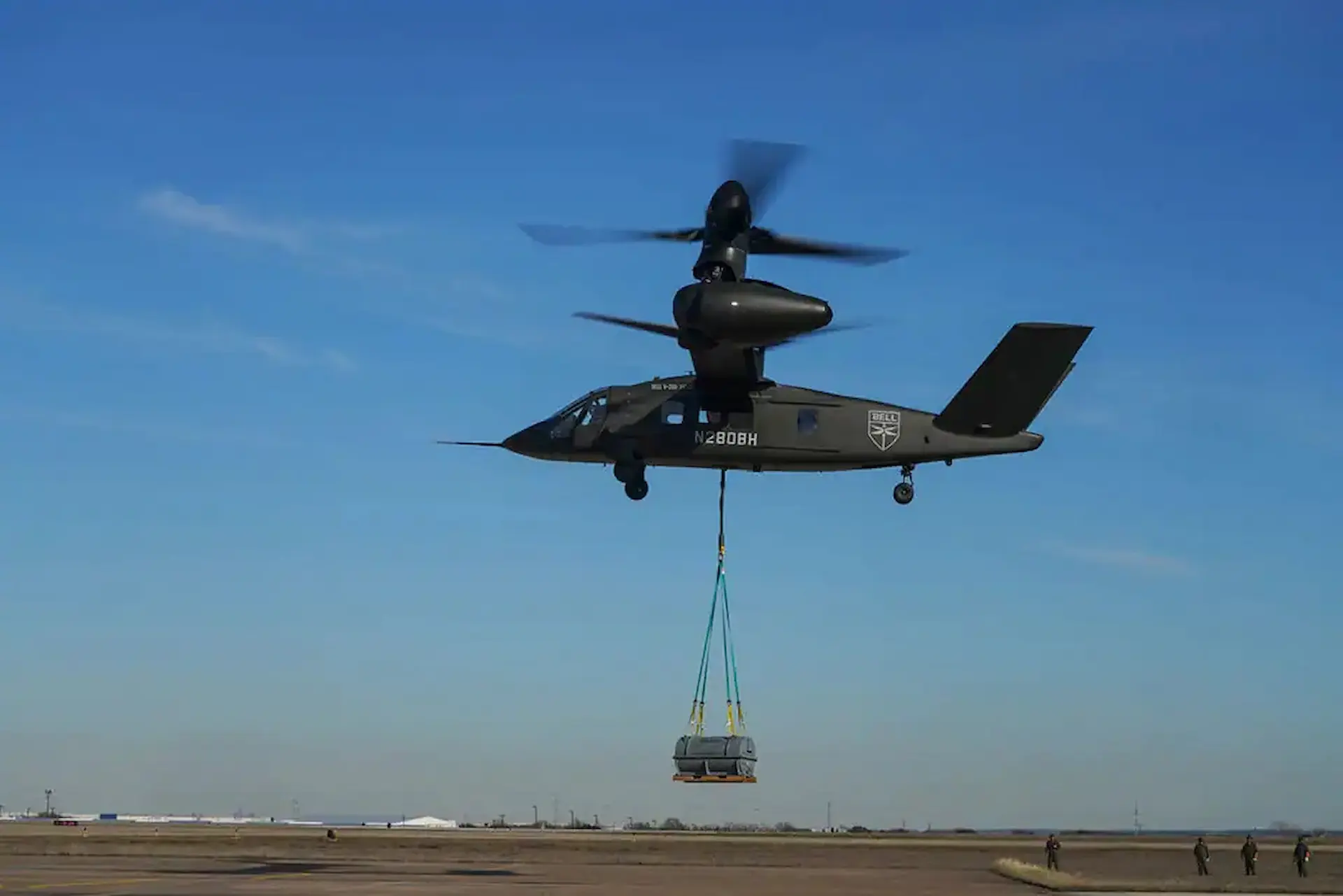
Without FLRAA, the US Army would find itself with a future manned vertical lift inventory filled by, what we are terming in Next Generation Rotorcraft (NGR) studies, as 'evolved legacy' platforms. These are basic designs that are decades old; the CH-47 Chinook first flew in the 1960s, while the UH-60 Black Hawk and AH-64 Apache are 'children of the 70s'. They have been through continual upgrades in key systems over the decades, including avionics and powerplants, and the latest 'digital' versions (CH-47F, AH-64E and UH-60M) offer far greater Situational Awareness (SA), self-protection and carefree handling characteristics to their crews when compared to their analogue forebears. However, even the US Army can see that 'evolution' only goes so far, especially when Return on Investment (RoI) is fully considered. The plan to provide a 'digital refresh' to hundreds of UH-60L airframes and recategorizing them as the UH-60Vs was terminated early, after only a few dozen were upgraded, at the same time as the FARA cancellation.
The Army, instead, has committed to continuing to buy new build UH-60Ms on a multi-year contract from Sikorsky. It was deemed the least expensive way of continuing to refresh the UH-60 inventory, while also extending the availability of attractive Foreign Military Sales (FMS) 'bucket pricing' for potential overseas users, as well as the potential for taking slots from the Army 'up front' to expedite delivery - as has been the case with Australia. It also, of course, satisfies the needs of The Hill, by giving Sikorsky something after the loss of FLRAA to Bell and the cancellation of FARA.
However, the US Army is very aware that trying to fight the next war with the warmed-over legacy capability from the Cold War is fraught with operational risk. The Chinook, Black Hawk and Apache were all, to a greater or lesser extent, designed with the potential European Central Front conflict with the Warsaw Pact in mind. That theoretical campaign would, it was envisaged, be fought mainly in the low lying, tank friendly, central German plain. The Apache's job was to attrit and slow down the Soviet armoured thrusts, while Black Hawks enabled air manoeuvre of troops to exploit flanking opportunities and the Chinooks did the heavy lifting of supplies and personnel, especially in maintaining the tactical mobility of artillery pieces - helping 'shoot and scoot' tactics to complete fire missions and move (hopefully) before counter artillery fire was received.

One could argue that the mission requirements in Ukraine are currently little different.
We're witnessing a scenario that, save for the poor employment of air power, would not have been unfamiliar to Tom Clancy as he penned his early techno-thrillers in the 1980s. The extensive employment of tanks, AFVs and artillery would be chime with most students of 1980s Soviet doctrine. Only the widespread, and highly innovative, use of UAVs would be something a surprise. The combat is taking place over tactical ranges familiar to those who authored the ‘Air Land Battle' doctrine in the 1980s, where outnumbered US forces sought to aggressively exploit manoeuvrist defensive tactics using air mobile and mechanised infantry to strike at advancing Warsaw Pact units and then move before overwhelming fires could be brought to bear against them - retreating along pre-planned routes to prepared positions to restock (if possible) and be ready for the next engagement.
Closely coordinated air power would not only employ Attack Helicopters and Close Air Support (CAS) aircraft working alongside ground units to extract a heavy toll of the enemy's advancing units, but also, via Battlefield Air Interdiction (BAI) platforms, hit the enemy's rear echelons - reducing the flow of men and material to the battlefield, as well as destroying key infrastructure such as bridges, POL farms and munitions depots. Further into the rear, railway marshalling yards and communications centres would also be targeted.
This 'Air Land Battle’ campaign strategy was designed to make it very difficult for the Warsaw Pact to maintain the pace of advance in the face of heavy attrition and logistic difficulties - extracting a heavy price in blood, treasure and time for every yard gained.
In reality, 'buying time’ was realistically more important than any hope of ‘winning' in a conventional sense. Time was needed for one key reason; despite by modern standards having a large force presence in Europe, as well as pre-positioned 'war stocks', NATO was keenly aware of the need to move significant reinforcements from the Continental US (ConUS) to truly hope to contain a Warsaw Pact advance.
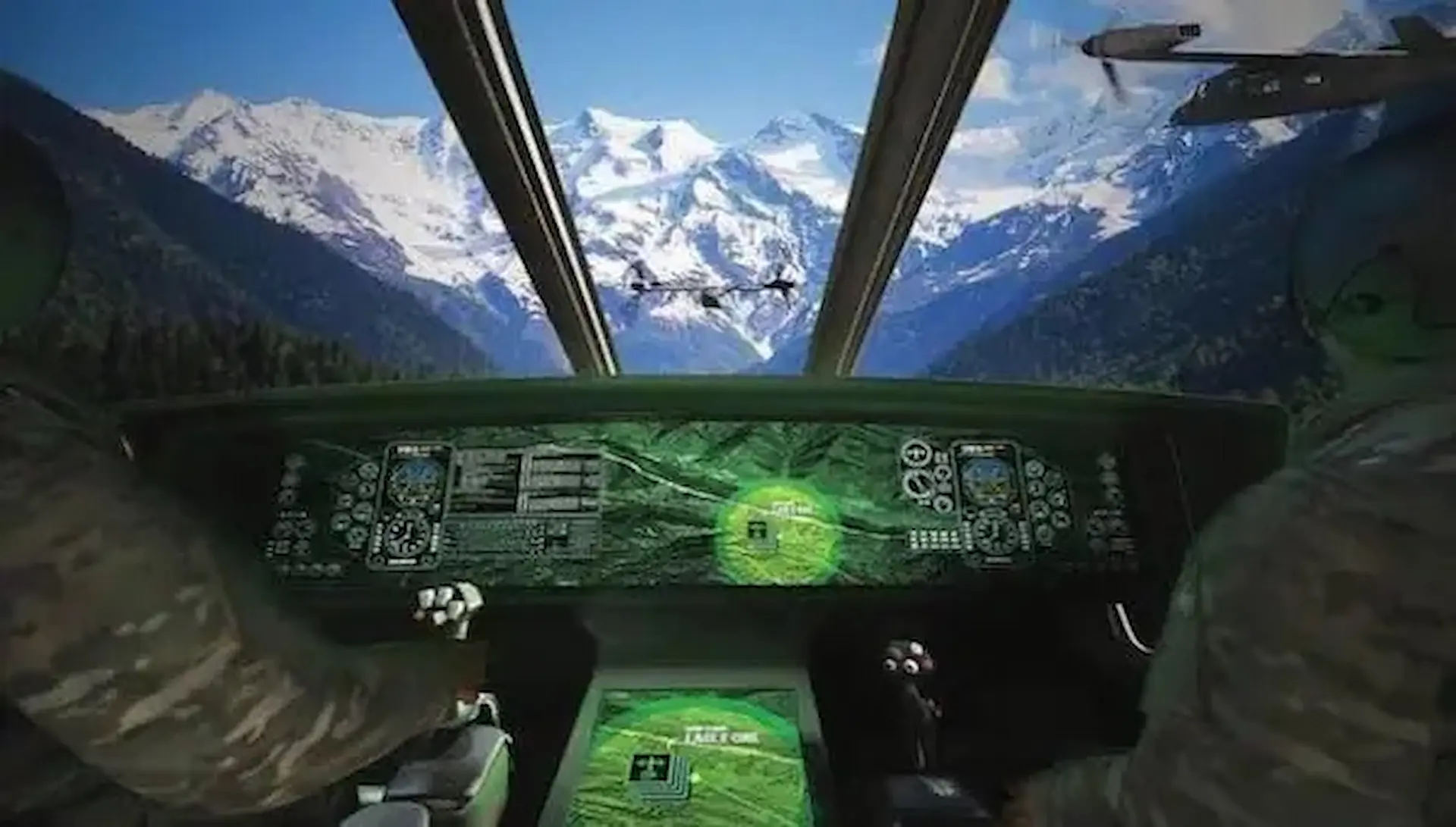
The 'time' element, therefore, was to give NATO the opportunity to execute the lessons identified by the annual 'REFORGER'' (REturn of FORces to GERmany) exercises to deliver enough combat power across the Atlantic by air and sea, quickly enough, to halt the attack before the NATO front collapsed. If NATO's forces buckled, the politicians would be left with two highly unpalatable options; surrender or take the first step onto the uncertain escalatory ladder by authorising the release of tactical nuclear weapons to SACEUR.
After that, all bets were off....
With a 1980's style land war taking place in Europe, and with an 'enduring' helicopter fleet that was, in most respects, designed to fight in exactly that war filling the Army's inventory, why is the FLRAA project reaching 'Milestone B' such a major marker for the Army?
Firstly, what exactly is 'Milestone B'?
For the FLRAA program, progressing to Milestone B confirms that the Army is satisfied that Bell's design, based on the V-280 Valor, and production plan has passed a Preliminary Design Review (PDR) and is cleared to enter the Engineering and Manufacturing Development (EMD) phase. Crucially, the EMD phase includes the production of six prototype FLRAA airframes for the Army's Test & Evaluation community to get their hands on.
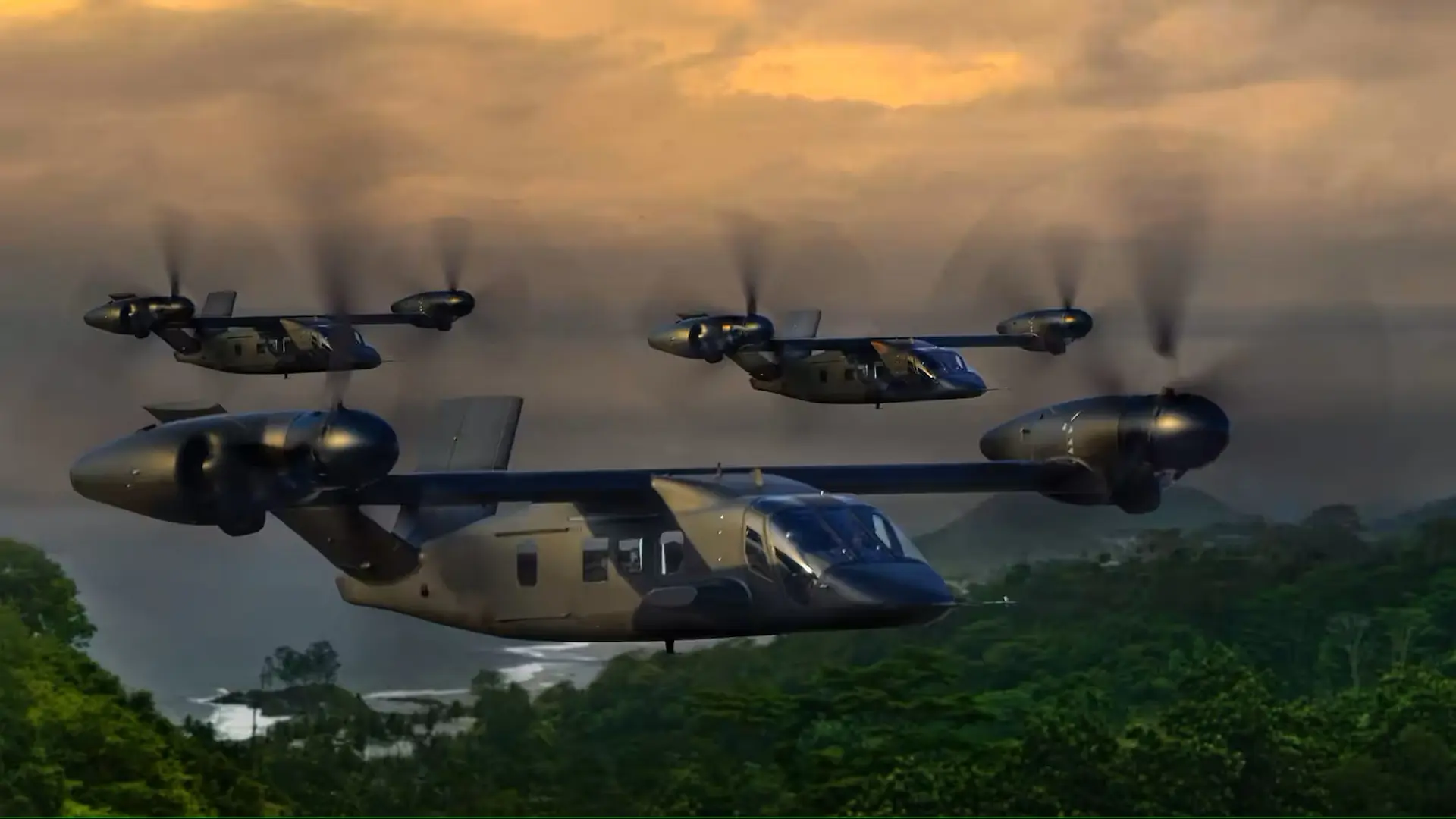
Bell have previously acknowledged that they are already 'bending metal' on these aircraft and expect to have the first airborne as soon as 2026. Testing this 'prototype batch' will identify any clear and obvious capability / requirements shortcomings and recommend any refinements and improvements that require incorporation into the anticipated Low-Rate Initial Production (LRIP) batch of airframes, expected to start 'in-build' circa 2028.
These LRIP aircraft will play a key role in the Operational Test & Evaluation (OT&E) process, leading up to the aircraft's anticipated first fielding in Fiscal Year 2031. The Army was unequivocal at this year's SOF Week conference held in Tampa back in May, that the FLRAA platform will be a key piece of future equipment for the 160th SOAR and have confirmed that the baseline 'needs' of the Special Operations community were fully considered during the PDR deliberations.
In sum, Bell have ensured that the aircraft will be able to accommodate the 160th's higher demand for state-of-the-art technology over the regular Army's 'cooking version'. Moreover, the mandated implementation of the Modular Open Systems Approach (MOSA) should make it easier for the platform to be fitted with the subsystems it needs on entry to service and remain affordably upgradable through life.
For the SOF role, I would expect to see similar capabilities to the current fleet of MH-47Gs and MH-60Ms carried over, with enhancements likely to include Air to Air Refuelling (AAR) capability (itself no simple retrofit...), advanced all-weather, day/night, Nap of Earth (NoE) pilotage and navigation systems including a Terrain Following Radar (TFR) such as the AN/APQ-187 'Silent Knight' and an advanced passive Electro Optical / Infra-Red (EO/IR) sensor, for example, the Raytheon AN/ZSQ-2 Electro Optic Sensor System (EOSS).

With my experience at working in both the UK and NATO on Degraded Visual Environment (DVE) programs, the EO/IR and TFR 'package' will also need support for true 'All Weather' operations at low level, especially for obstacle avoidance, so I would expect to see technology spun out form the Degraded Visual Environment Pilotage System (DVEPS) to be fitted, likely to include a LIDAR sensor and, potentially, some form of haptic feedback / interface to the flying controls.
When we were studying DVE mitigation as part of a broad set of NATO trials, the benefits of so called 'active sticks' in reducing cockpit workload was a factor highlighted by our coterie of Experimental Test Pilots (XPs). Boeing has already tested BAES' Active Parallel Actuator Subsystem (APAS) on the MH-47G's Digital Automatic Flight Control System (DAFCS) for the US Army. APAS offers force-feedback and tactile cueing to crews when operating in high workload and demanding operational environments. As a current generation, 'born digital', design, I would expect that the production FLRAA will accommodate such handling requirements without the need for an entirely new technology, such as APAS, fitted alongside.
The regular FLRAA for the Army will likely feature a similar suite of Aircraft Survivability Equipment (ASE) and defensive weapons as the current UH-60M. I'd expect the AN/AAR-57 Common Missile Warning System (CMWS) to be fitted to all aircraft, with either/and a Countermeasure Dispensing System (CMDS), likely the AN/ALE-47, and, possibly, some form of Directed IR Counter Measure (DIRCM).
For selected units, a Radar Warning Receiver and chaff capability (almost certainly a variant of the AN/APR-39V) would be fitted. The 160th 'birds' would likely add some form of active/passive RF Countermeasures to the mix, and doubtless, additional ballistic protection.
In terms of defensive weapons, the V-22 Osprey has received criticism over its relative lack of firepower in the forward arcs - a legacy of the programmatic decision to delete the proposed 'chin' turret to save cost and weight.
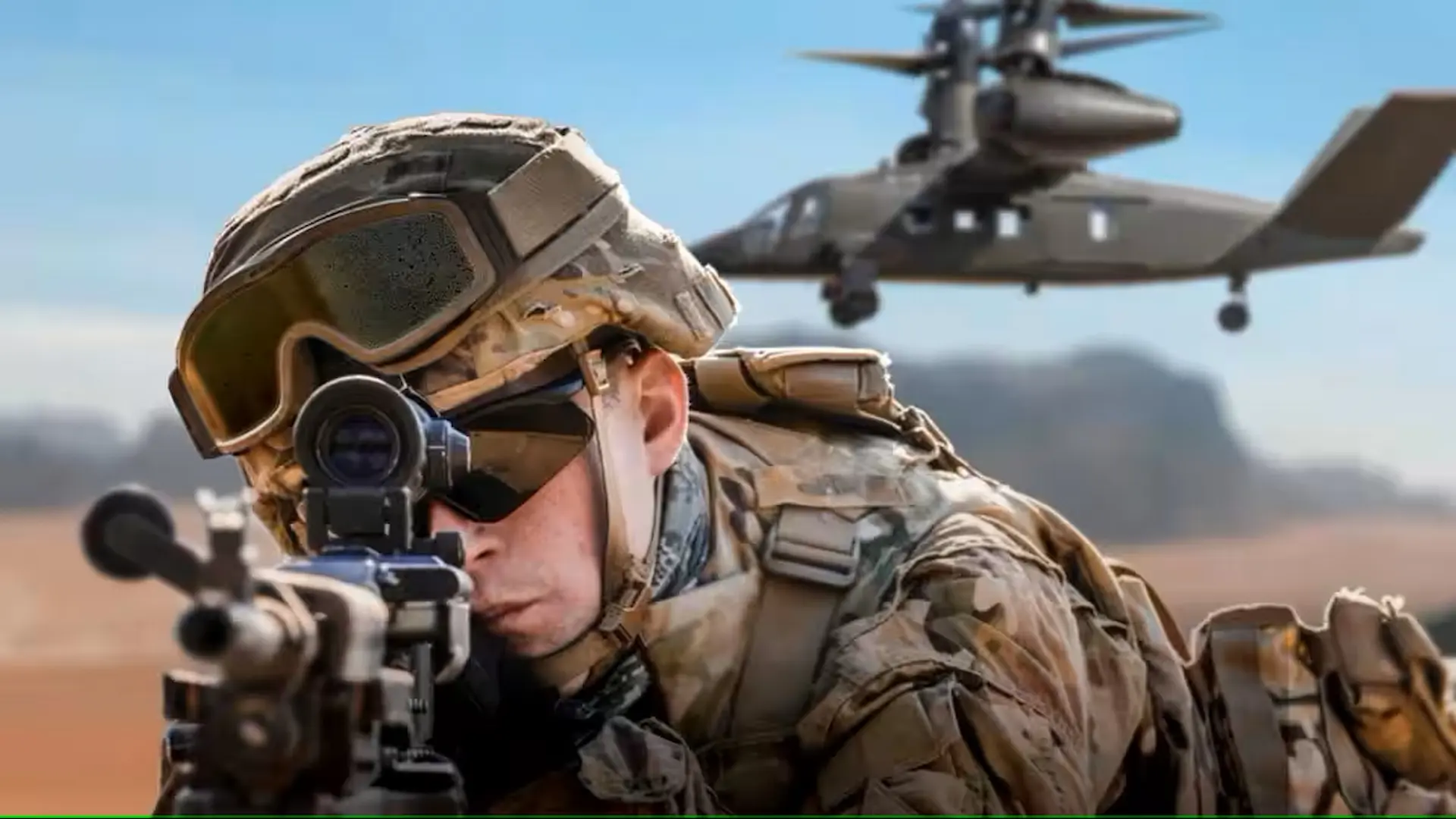
The V-280 mock up that Bell have been displaying at trade shows over the past few years sports the Army-standard M240 7.62mm gun on a window pintle. The FLRAA production version may well look to up the ante, whilst it's almost a certainty that the 160th's aircraft will sport the near SF-ubiquitous M134D Minigun.
It will be intriguing to see what role the FLRAA assumes for the 'Nightstalkers'. In size and payload, it sits broadly alongside the MH-60M. However, will it replace or supplement all the -60's roles, including the heavily armed Direct Action Penetrator (DAP), or just assume the mantle of medium assault platform? A DAP variant would need to 'square the circle' of getting appreciable firepower, such as 30mm cannon, 2.75" APKWS rockets and Hellfire missiles, past the rotors throughout their arc of travel in both high and low speed flight.
Also worthy of consideration is that the FLRAA, by dint of its high cruise speed and long range, may well be able to action targets that are currently only within the reach of the MH-47G with its 'fat tanks' and ability to carry the Robertson Extended Range Fuel System (ERFS) when AAR or FARP options are not available.
It also, intriguingly, will give the 160th a platform that steers pretty close to AFSOC's CV-22 Osprey in many areas, perhaps giving USSOCCOM planners a number of tactical options they've not previously had - including, potentially, 'DAP FLRAAs' acting as an escort platform for CV-22s.
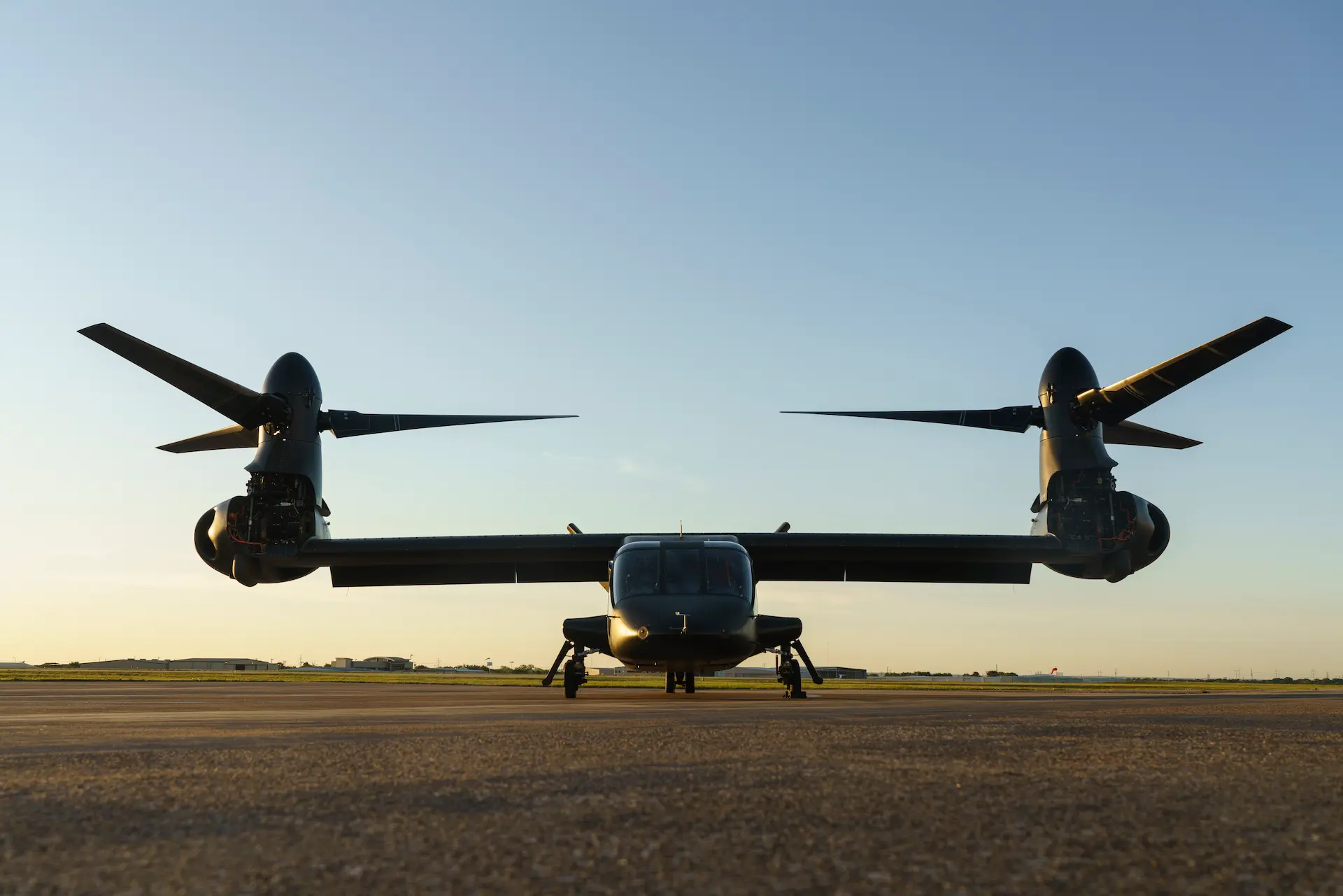
Secondly, why is FLRAA so important to the US Army, and why now?
Essentially, it boils down to two major factors, in my personal opinion. One reputational, and the other operational.
As I've written before, the US Army has yet to field a truly 'new' helicopter since Army Aviators took responsibility for drafting their own requirements and running their own programs in the early 1980s. The run of failures and false starts includes the RAH-66 Comanche, the Armed Reconnaissance Helicopter (ARH), the Armed Aerial Scout (AAS) and, most recently, the Future Attack and Reconnaissance Aircraft (FARA). Some have been the 'right helicopter at the wrong time' (RAH-66), others have been the victim of changing needs and requirements, and some, well, have just been badly conceived and managed.
While the Army has successfully digitally enhanced their legacy fleet to an enduring standard, the only addition to the Army's core rotorcraft inventory in the past four decades has been the UH-72 Lakota Light Utility Helicopter (LUH) - essentially an Airbus H145 painted green with a couple of radios and a hoist fitted. 'New' to the Army, perhaps, but manifestly an Off The Shelf buy.
As I noted at the start of this article, the Army needs FLRAA to succeed or face the grim reality of spending nearly half a century continually failing to deliver a genuinely new aircraft to the active fleet - a time during which, just for comparison, the USAF has delivered several multi billion dollar programs, including the B-2, C-17, F-22, F-35, MQ-1, MQ-9, RQ-4, RQ-170, CV-22, E-8, and KC-46 Pegasus (as well as small handfuls of specialist platforms and likely a host of limited production 'black' projects) as new aircraft, and completed multiple upgrades on many of their key legacy types. The F-15EX has just entered service, the B-21 Raider is in flight test, the first production MH-139 Grey Wolf has just been delivered, and the venerable B-52 is about to get new engines to extend its service life past the 100 year mark. That's an impressive tally, before we even consider the US Navy and Marine Corps - the latter having continuously upgraded the AH-1/H-1 family and introduced the MV-22 and CH-53K, as well as the F-35B/C, in the same timeframe.
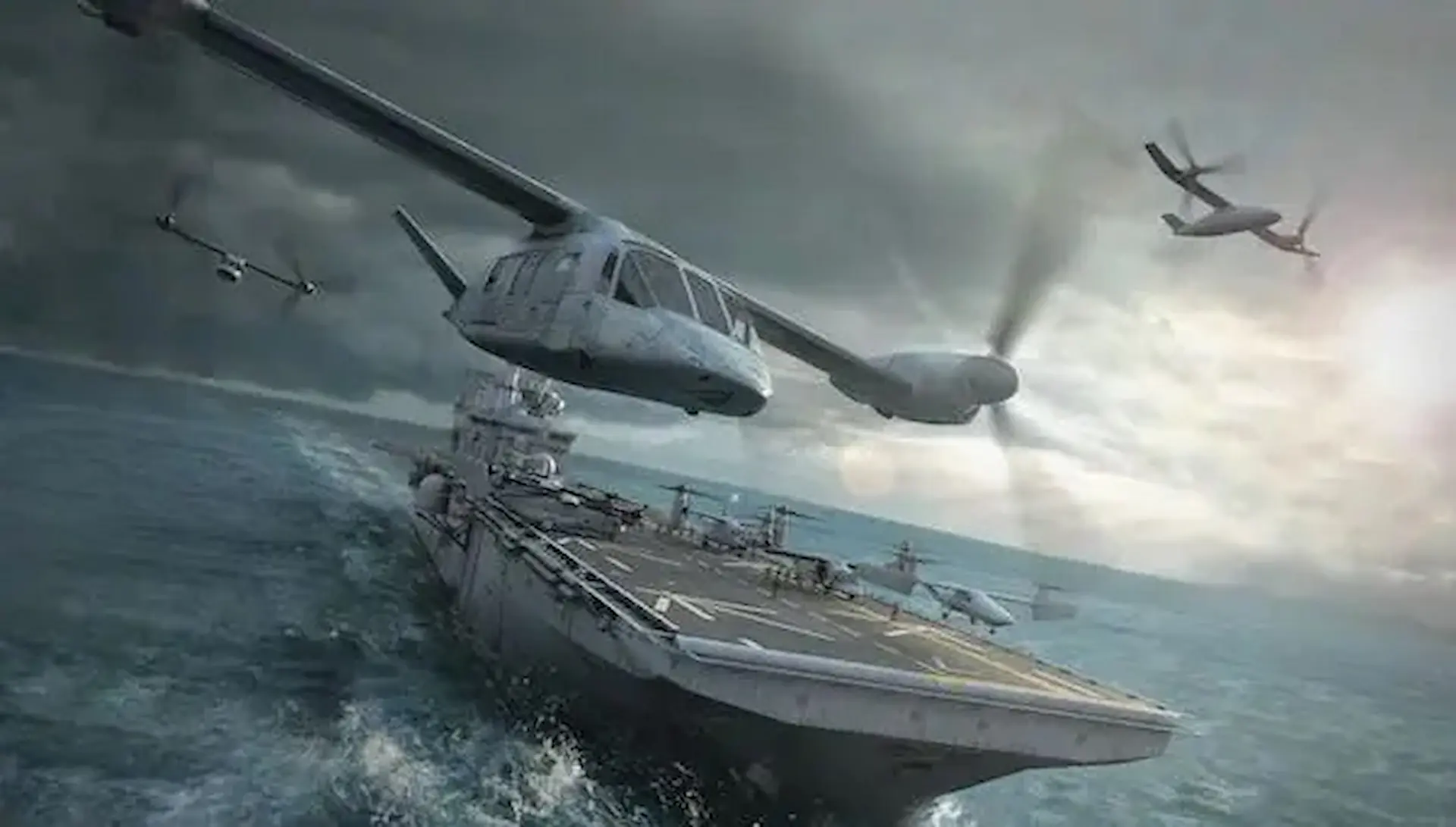
Those lists, particularly the rotorcraft on them, make pretty awful reading for the supposed helicopter 'specialists' in the Army Aviation Branch. In the face of decades of apparent failure, FLRAA, through the Bell V-280, has got to deliver. I continue to maintain that many in the Army were able to overcome their inherent scepticism of tiltrotor technology due to the relative maturity of the V-280 vice its competition. Bell has built over 500 production tiltrotors, the V-22, and the fleet has amassed over 700 000 flight hours. The Army can, therefore, have a high degree of confidence that Bell can design, build and support a tiltrotor, especially one that will incorporate 'lessons identified' from the V-22 program and not need to accommodate such demanding requirements as powered blade and wing folding.
The operational case provides alignment with the Ukraine experience, and also an important delta. Whilst the 'transparent battlefield' conditions in Ukraine, due largely to the huge numbers of UAVs being deployed in the ISR and light attack roles, is unlikely to exist for any meaningful length of time as countermeasures and TTPs are developed to mitigate it, nonetheless some aspects of the Ukraine war will endure.
One of these, the vulnerability of forward deployed assets has long been an issue. Western planners have traditionally assumed that their battlefield rotorcraft (Find, Lift, and Attack) would be located relatively close to the front lines. This was to enable their relatively slow transit speeds and endurance, when compared to a tactical jet aircraft, to be somewhat mitigated, as well as conferring an element of mobility and unpredictability over their location.
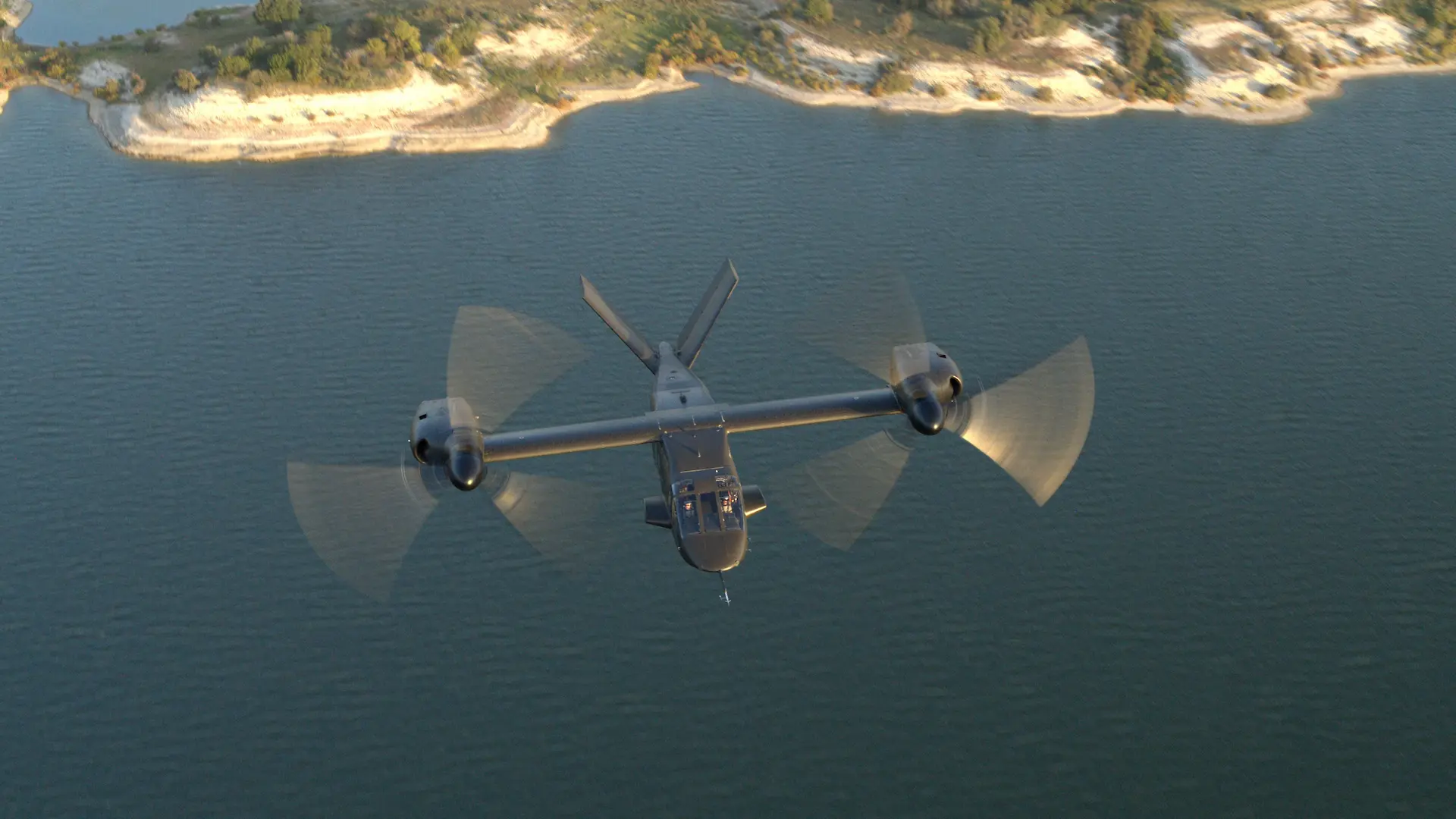
In future campaigns, even if 90% of the drone threat is eliminated, it only takes one to discover a flight site in the field, or a single careless radio transmission to be detected and geo-located. The 'God of War', artillery, has certainly been 'back' in Ukraine and as detection and targeting into 'the deep battle' improves, enhancements to long range fires (tube artillery, rockets and UAVs/Loitering munitions) have followed, and enabled the traditional sanctuary areas afforded to helicopters to be held at risk.
FLRAA offers the Army, and other purchasers, the opportunity to keep their assets well back from the front line and the concomitant risk of detection and destruction. The sheer speed, range and endurance of the V-280 design will permit FLRAA to deliver the same effect on the battlefield from a base of relative safety, well behind the lines.
In fact, the aircraft's speed around the battlespace will actually enable more to be done in the same operating period and increase the tactical area it can influence significantly over the UH-60. Potentially, FLRAA assault units could now reach into the enemy's rear areas - allowing for destabilising 'hit and run' raids and the targeting of those key logistical bottlenecks - all in addition to flying faster and 'smarter' than legacy platforms thanks to MOSA optimised battlefield SA. Speed and 'smarts' offer appreciable gains in terms of survivability and mission success.
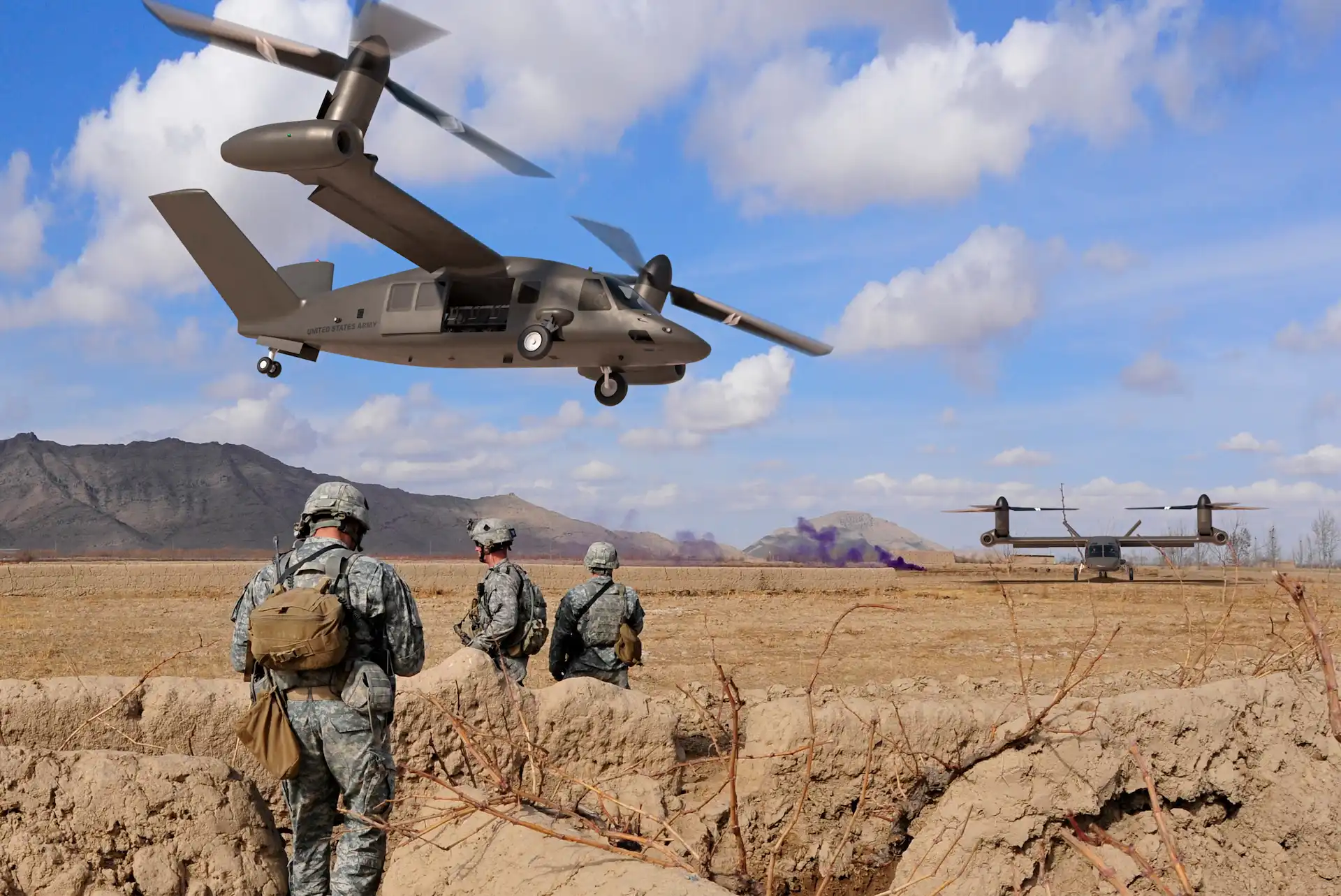
The delta, however, is literally half a world away - The Pacific Ocean.
I've been consistent in my opinion and analysis that if the Army was taking The Pacific Theatre seriously, then Bell would win FLRAA. Despite some 'vigorous' debates with friends and colleagues at Sikorsky, over many bottles of 'punchy' red wine and more than a couple of dry Martinis, I've never been wholly convinced that the complex compounded coaxial 'X2' technology proposed by Sikorsky/Boeing as their FLRAA entry, the SB>1 Defiant, was up to the task of dealing with the 'tyranny of range' the Pacific challenges military planners with.
The Army, doubtless, has a corporate memory of the Second World War, where the US Navy and USMC held undoubted primacy in the 'Island Hopping' campaign. The USAF too, then still a branch of the Army, were largely bit part actors until the amphibious advance captured islands that could be repurposed for long range bombers to strike targets close to, and on, the Japanese main islands. By opting for the tiltrotor, the Army have put a marker down that they mean to play a significant part in both deterring any aggression and responding to it if conflict breaks out.
Bell's heritage in tilt rotor technology has also attracted the attention of the USAF, who are investing in High Speed VTOL (HSVTOL) technology through DARPA and SOCOM initiatives such as SPRINT (SPeed and Runway Independent Technologies), which seek to develop platforms capable of cruising at over 400kts, yet still able to take off and land vertically at unprepared locations - offering the potential to disperse assets away from undoubtedly pre-registered and targeted facilities, such as airfields.
Despite the FLRAA award being challenged by Sikorsky, and the concerns of remaining sceptics that may still reside in the Army over tilt-rotor technology, in my opinion the Army has called this right. The FLRAA, hopefully soon to receive a formal name and designation, will be a key component in the Aviation Branch's future. The exciting work is now close at hand, that of refining the doctrine and developing the TTPs and SOPs to ensure this transformative machine is utilised properly - and manifestly not simply employed as a '300kt Black Hawk'.

Once that work is underway, I expect to see global interest in the design start to get serious, as more countries begin to rewrite their legacy doctrine to embrace the potential of the new generation of vertical lift platforms. Whilst some countries, for industrial base reasons, will prefer a European design, and others will wish to avoid the restrictions of ITAR, when the FLRAA is available for export via FMS or, perhaps, licence production, its provenance, key reference customers, supportability and likely price point will guarantee that many nations will weigh its merits carefully in their acquisition plans.
After all, who wants to carry on buying yesterday's aircraft tomorrow?
 HOME
HOME



